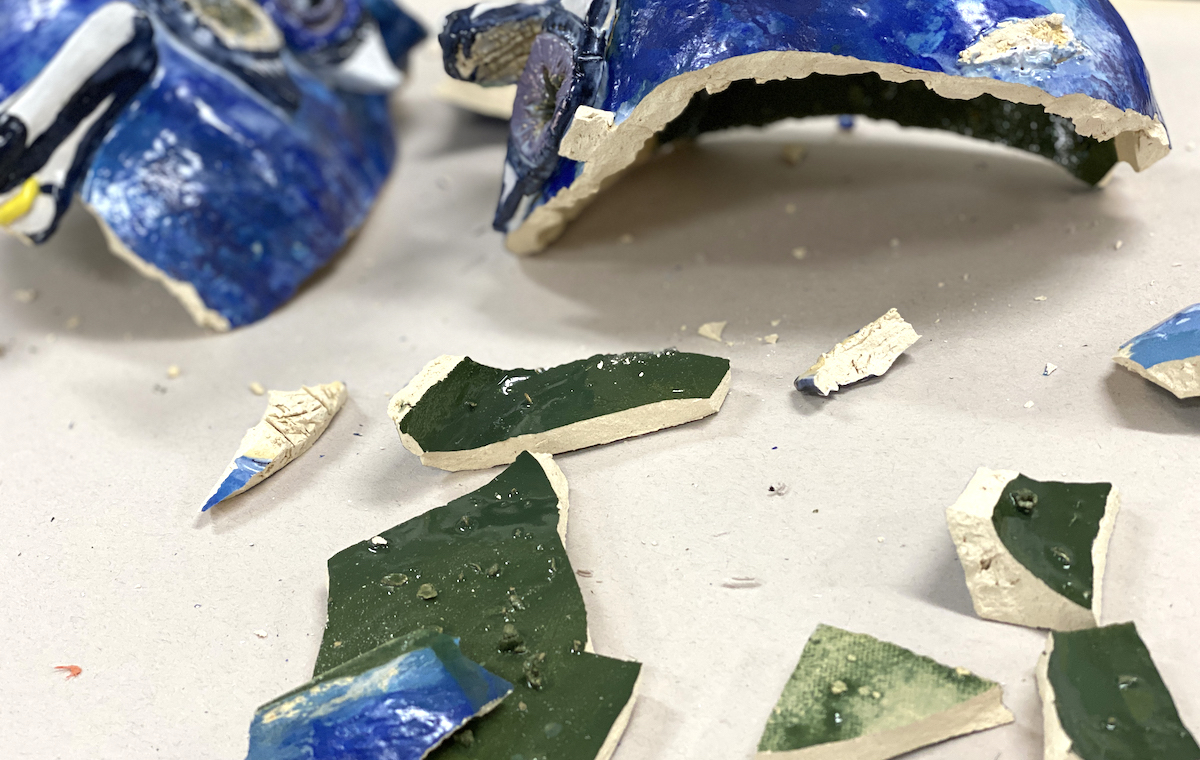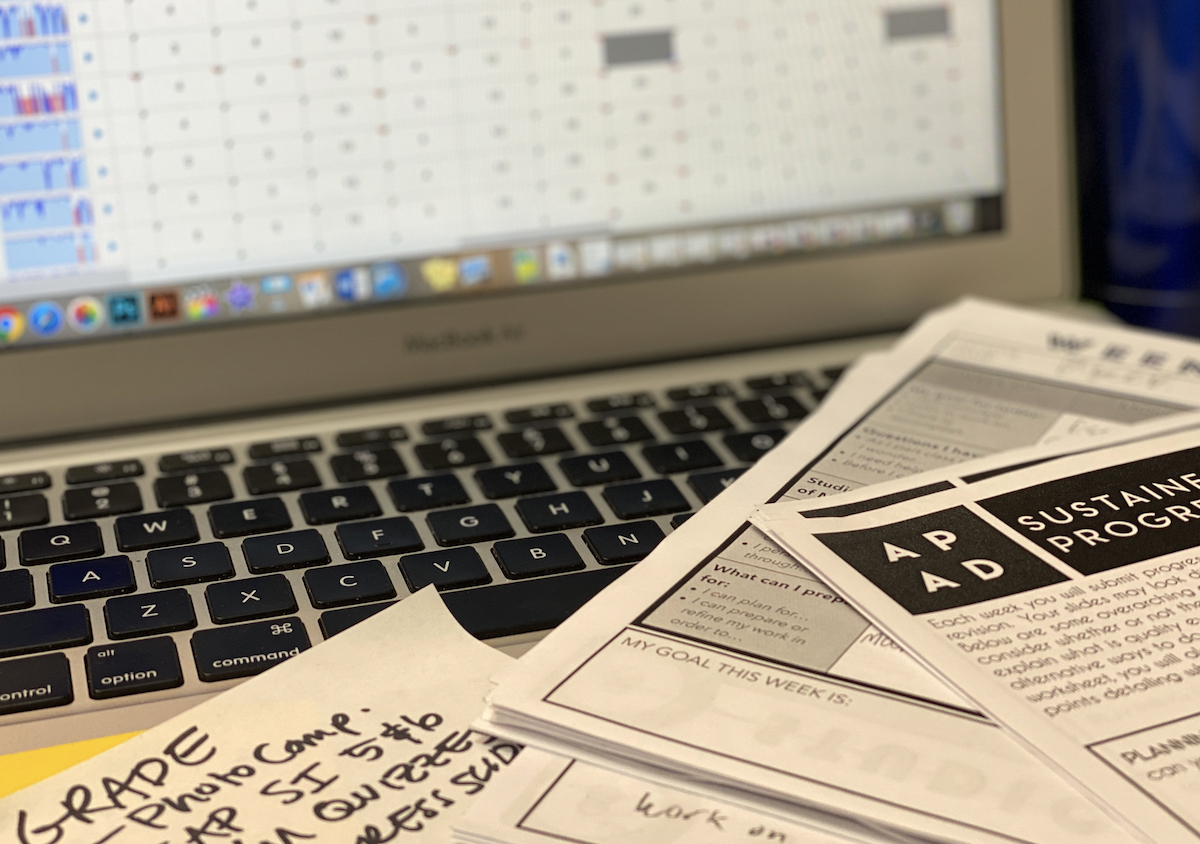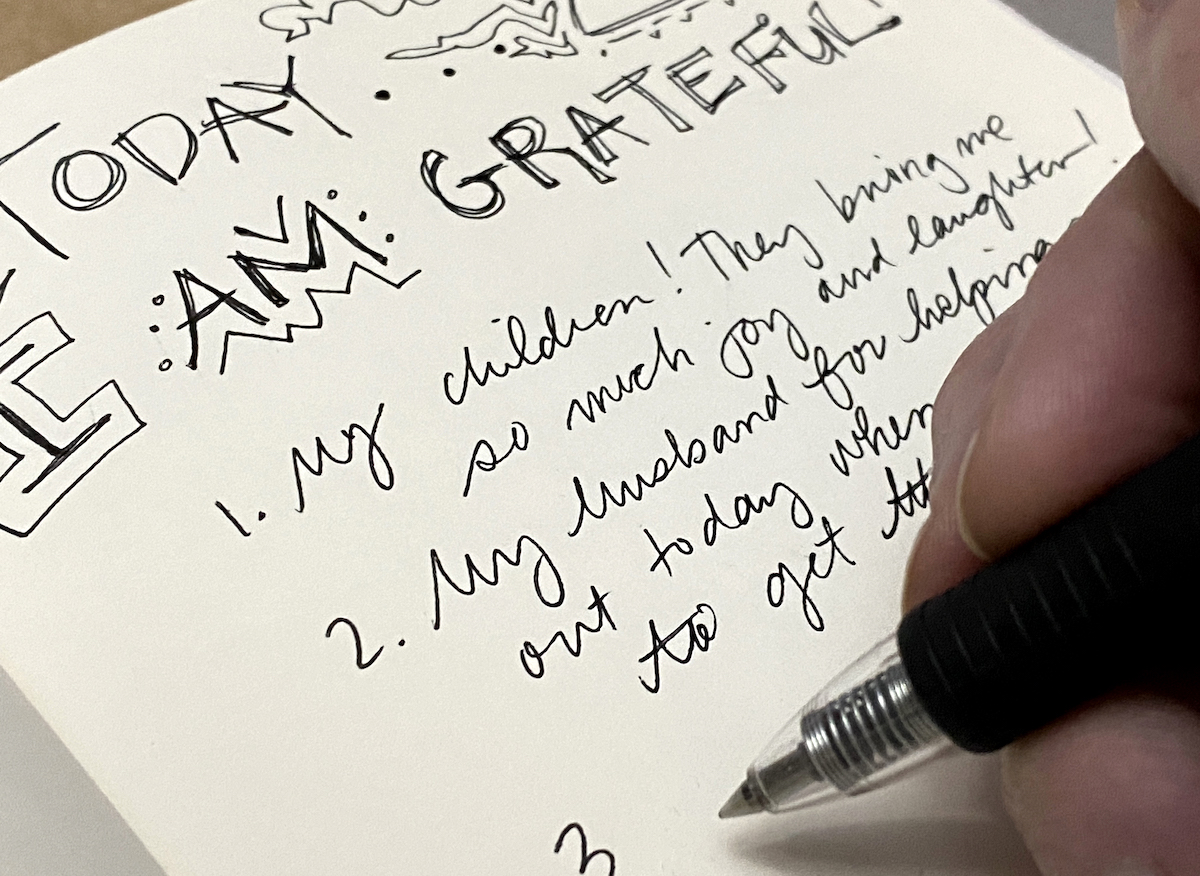We’ve all had a day or two (or week) when you find yourself saying, “I’m a bad teacher!” When we aren’t feeling great about our teaching practice, we are feeling so stretched thin we forget why we teach, or even when our balance between home and career is out of whack, we don’t feel like we are being an “A” anything. When you are feeling down about your media mishaps, or how you handled a student’s sassy response, it’s important to remind ourselves that we are humans, after all. Let’s take a look at some common feelings we have and how we can counteract them.
The problem: My students did not get the point of my assignment!
Isn’t it the worst when you spend all this time creating a project with handouts and steps galore, only to find students confused on instructions, not engaged or as excited as you are about the process, or just simply spending a lot of time making bad artwork?
Listen to: The World’s Most Okayest Art Teacher (Ep. 084)
The solution:
This happens to every teacher at some point (or many points) in their career; you are not alone! Just because a lesson doesn’t go well with one group of students doesn’t mean it won’t work for others. Consider tweaking your lesson instead of completely scrapping all your hard work. Figure out what did and didn’t work and apply it to your next lesson idea. If anything, it’s a great way to model growth mindset to your students. It didn’t work out? Meh, no biggie. I learned from this and will do differently next time. Another idea is to put the onus on them: ask students how they would problem solve this issue, what they’re interested in creating, or how they might modify to make it work. When students are invested in the outcome, they tend to engage more by persisting through the process.
The problem: OOPS! I ruined my student’s artwork!
You are carrying your student’s laborious greenware to the kiln and accidentally knock a corner along the way, shattering the entire fragile piece into, well, many, many pieces. Or, you take home your students’ self-portraits they spent weeks mastering to grade and, oops, your cat knocked your coffee onto the entire stack.

The solution:
Well, that’s a tricky one, isn’t it? Sometimes artwork blows up in the kiln, pieces go missing, or a student may even vandalize another student’s artwork. It feels terrible when students work so hard, and we are the ones to blame for the mishaps. Try to forgive yourself first, admit the wrong, and apologize to the student. When we share our sadness and embarrassment with the student for our faux pas, we are also modeling a request for forgiveness. Give the student a grade for their hard work, remind students to record process daily, and move on. Their next artwork will be even more stellar than the last!
The problem: I’m not an octopus, and you cannot clone me.
The odds are not in our favor: there is only one of us to thirty of them, and we only have two arms. It feels pretty crummy when you can’t reach all students to give them the time they need to succeed. Their artwork is not good, they simply aren’t getting it, but you are pulled in too many directions to give them one-on-one attention.
Read more: 10 Ways to Better Balance Work and Life
The solution:
Sometimes it’s okay for students to wait. Try asking students at the beginning of class, “Who has questions for me?” and write their names on the whiteboard. In doing so, all students can see when they will be addressed and won’t need to keep interrupting you or spend a period raising their hands. It also gives you a way to keep track of who you need to help next. Another strategy is to filter the questions students might have. For example, if a student asks you to demonstrate a skill, you can point to another student in the class and suggest, “Try asking Suzy. She’s an expert at cross-hatching! If you are still struggling after that, then ask me, and I will be happy to give you further support.” This frees you up for another student while modeling a sense of community within the classroom.
The problem: I love teaching art, but grading is ruining my life!
When you feel like you are drowning in grading artwork and can’t keep up with entering numbers into your grade book, it can really take the wind out of your sails. Often we are trying to stay one step ahead to be effective and responsive in preparation for tomorrow, and grading gets pushed aside becoming a chore. What might be even worse is when you spend all that time entering grades just to find that they aren’t matching up to what is actually happening in your classroom.

The solution:
First, it’s important to really reflect on your assessment practices. Rubrics are a great way to keep the goal in mind. “What are the essential standards I want my students to gain from this experience?” Maybe it’s time to include the process, risk-taking, and exploration into the rubric to help balance expectations of the end product. It’s also a great way to show your students you value the learning and thinking that goes on throughout the creation process. Second, when reflecting on your standards, remember to consider the student as a whole. “How can I provide timely feedback without spending hours of my time? Is there another way to assess that will authentically reflect what my student learned?” Consider looking into holistic approaches, such as overall growth, that don’t quantify your student by numbers. If your assessment practices have you in the dumps, there are so many innovative and effective ways to view student progress. Take some time now to find out what will work for you, and you will save yourself time and heartache later down the road.
The problem: Home and work-life balance is just not happening.
We all know teaching isn’t simply an eight to three kind of gig. Not only do we work for many hours outside of the school day but also the hours within the workday can be pretty intense. We give one thousand percent every moment we are at school. From the moment we walk onto school grounds until the moment we leave, someone needs our attention and we are expected to be “on” at all times. Having the opportunity to use the bathroom even once during the day is a glorified bonus. When getting home after a long day of energy spent, it’s excruciating to switch gears and take care of everything else at home, none-the-less yourself.

The solution:
Find ways to simplify your workload and lessen your energy output. Remember, the school year is a marathon, not a sprint. Sometimes you have to conserve your energy for the home stretch.
Try:
- Using an old tried-and-true lesson with little prep.
- Schedule a half-hour meeting each day and hideout to grade instead of taking it home with you.
- Write a list at the end of the day for the following day, and do NOT take it home with you.
- Lean on your partner to pick up some of the daily expectations like grocery shopping or getting the kids off to school at times when school is the busiest.
- Take a moment to meditate or take a bath.
- Write in a gratitude journal for five minutes before you start your day.
- Listen to a podcast you love or rock out to your favorite tunes on the drive home.
No, these won’t fix everything, but these little things can give you bit of peace at the end of the day.
Overall, it’s important to be gentle with yourself and remember you are human. You have feelings, and life exists outside the bubble of your school environment. There are often many factors we carry with us throughout our day that may impact how we feel at any given moment. On the flip side, try to remember we are working with human beings as well. They also carry with them a lot of invisible, emotional baggage that impacts how we are received from moment to moment. Our students are not machined parts that all look the same, with the same exact input and output. They are not only learning how to create art but are also learning the life skills and behaviors we model. When we are kind to ourselves and with them, our students develop empathy for not only others but for themselves as well.
What ways do you feel like a bad teacher, and how do you counteract those feelings?
How do you take care of yourself and your students at your worst moments?
Magazine articles and podcasts are opinions of professional education contributors and do not necessarily represent the position of the Art of Education University (AOEU) or its academic offerings. Contributors use terms in the way they are most often talked about in the scope of their educational experiences.





